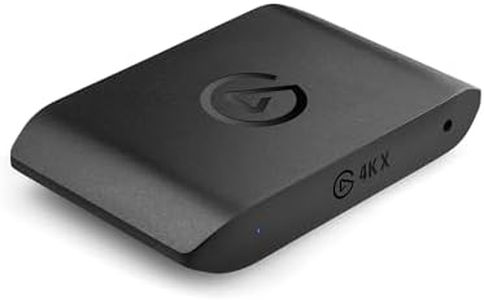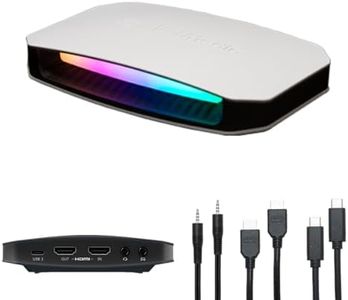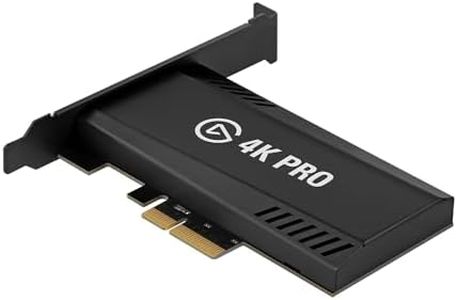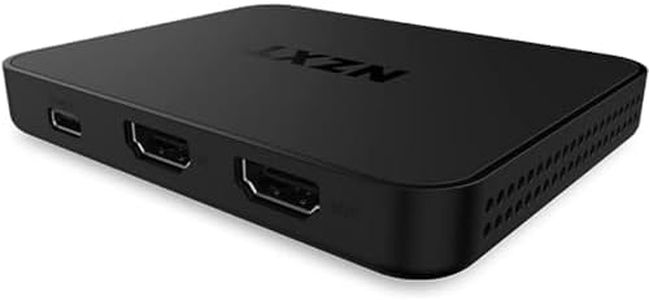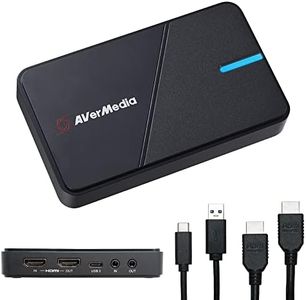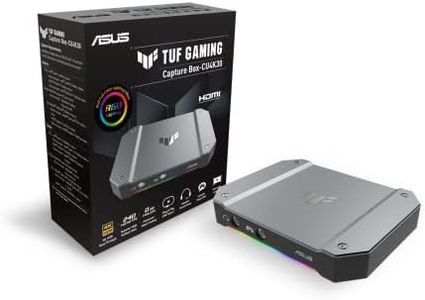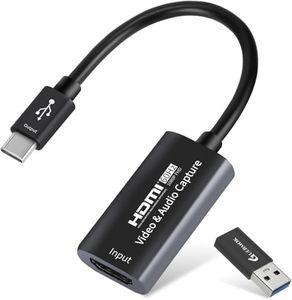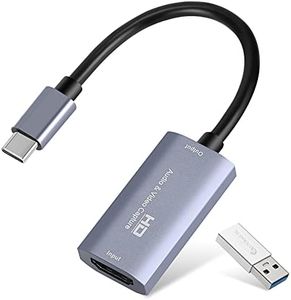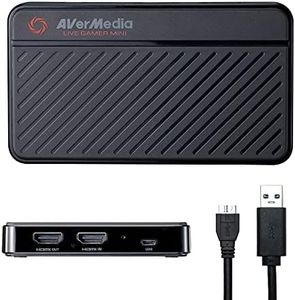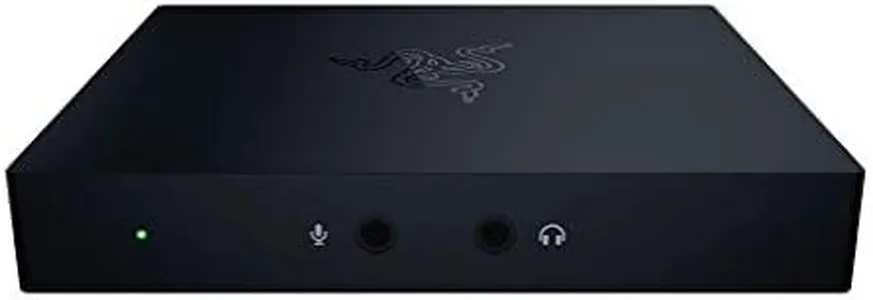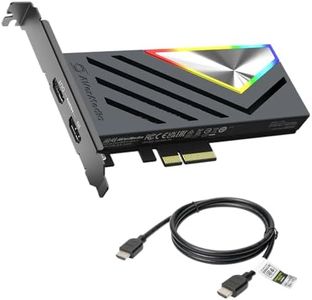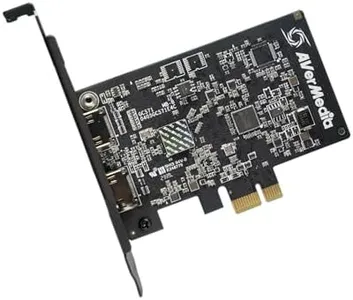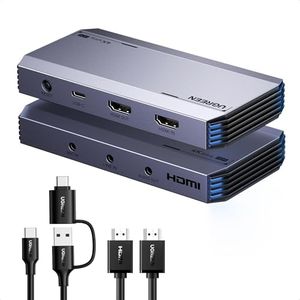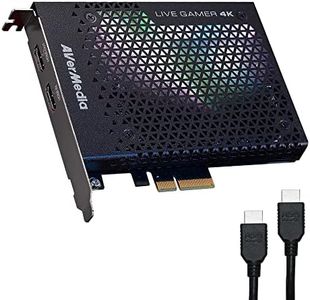We Use CookiesWe use cookies to enhance the security, performance,
functionality and for analytical and promotional activities. By continuing to browse this site you
are agreeing to our privacy policy
10 Best Capture Cards
From leading brands and best sellers available on the web.By clicking on a link to a third party's website, log data is shared with that third party.
Buying Guide for the Best Capture Cards
When you're looking to buy a capture card, it's all about figuring out what you'll be using it for—like streaming games, recording video from a camera, or capturing footage from another device. A capture card acts as a bridge between your device (like a gaming console or camera) and your computer, allowing you to record or stream high-quality video and audio. The best way to pick the right one is to match the specs with your needs, making sure you have the right ports, quality, and features for what you plan to do.Resolution and Frame RateResolution determines how sharp and clear your video will look, while frame rate affects how smooth motion appears. Common resolutions are 720p, 1080p, and 4K, and frame rates are usually 30fps or 60fps. Lower resolutions and frame rates are fine for basic recording or streaming, but if you want professional-looking, crisp footage—especially for gaming or high-quality production—higher numbers are better. Consider how much detail and fluidity you want in your content: 1080p at 60fps is a standard for most streamers, while 4K at 60fps is best if you care about ultra-high definition for professional or tech-forward use.
Input and Output PortsThis spec tells you what devices you can plug into your capture card. HDMI is the most common port for modern consoles and cameras, while older devices might use component or composite inputs. You also need to check if there's a 'pass-through' output that lets you play on your main screen while capturing the footage. If you'll use newer devices like game consoles or cameras, make sure the card supports HDMI, and if you want zero-lag local play, look for models with HDMI pass-through.
Connection to ComputerCapture cards typically connect to your computer using USB or PCIe (which goes directly into your desktop’s motherboard). USB options are portable and easier for laptops, while PCIe options are installed inside desktops and usually offer faster data transfer, which helps with higher resolution or lower latency. Pick USB if you need something portable or easy to use with multiple devices, and PCIe if you're building a dedicated streaming or recording setup on a stationary PC.
EncodingSome capture cards come with hardware encoding, meaning they can process the video signal themselves, reducing the load on your computer. Others rely on your computer to do the heavy lifting (software encoding). Hardware encoding is especially helpful if your computer isn’t very powerful or you want smoother recording/streaming without impacting your computer’s performance. For casual use, software encoding is often enough, but for heavy streaming or extensive video recording, hardware encoding makes things easier and more reliable.
Platform CompatibilityNot all capture cards are built for every operating system or device. Some work only with Windows, while others support macOS or even game consoles directly. Think about what devices and operating systems you use now (or might use soon) and check for broad compatibility. This helps you avoid unwanted surprises and ensures everything connects smoothly.
LatencyLatency is the delay between an action happening (like pressing a button on your game controller) and when you see it on your screen. Lower latency is crucial for things like live streaming and gaming because it keeps things closely in sync. Capture cards with 'zero-lag pass-through' or low-latency features give you a better real-time experience. If you’re gaming or doing live broadcasts where timing matters, prioritize a card with low latency.
